The Economics and Statistics Division maintains archives of previous publications for accountability purposes, but makes no updates to keep these documents current with the latest data revisions from Statistics Canada. As a result, information in older documents may not be accurate. Please exercise caution when referring to older documents. For the latest information and historical data, please contact the individual listed to the right.
<--- Return to Archive
For additional information relating to this article, please contact:
November 24, 2023AQUACULTURE, 2022 Canada's aquaculture industry produced 166,265 tonnes of finfish and shellfish products in 2022 (including restocking), with a value of $1.34 billion.
British Columbia is Canada's largest aqualcuture producing province, accounting for 58.0% of production volume and 68.3% of production value in 2022.
Nova Scotia's aquaculture output of 15,239 tonnes was 9.2% of national output while the province's aquaculture production value of $158.0 million represented 11.8% of the national total.


National aquaculture output tonnage decreased by 10.7% from 2021 to 2022. Nova Scotia reported the largest percentage gain in aquaculture production tonnage at +37.8% while New Brunswick reported the largest decline at -59.8%.
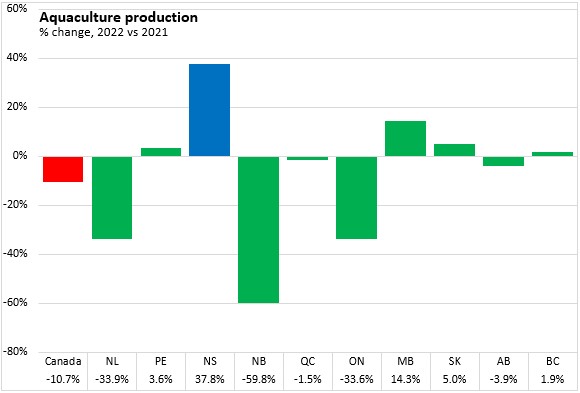
Nova Scotia's aquaculture output value grew by 90.4% to $158.0 million from 2021 to 2022. National aquaculture output value was little changed (+0.6%) while there were notable declines in both Newfoundland and Labrador and New Brunswick.
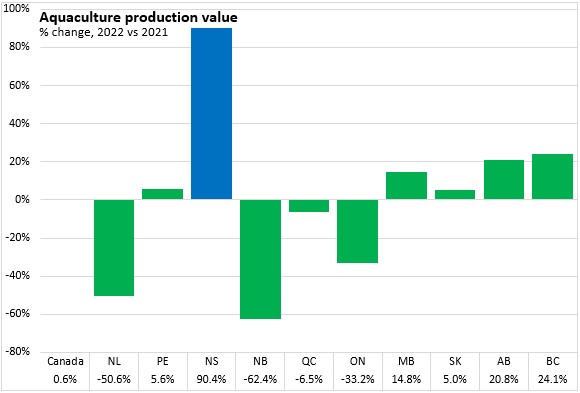
In 2022, the average unit value of Nova Scotia's aquaculture products was above the national average at $10,369 per tonne - the highest value among provinces. This was up 38.2% from value per tonne in 2021.
National aquaculture value per tonne was $8,075 (+12.6% from 2021) with the lowest value in Prince Edward Island. Differences across provinces reflects in part differences in the relative amounts of finfish and shellfish produced in each province, with finfish generally having higher unit values.
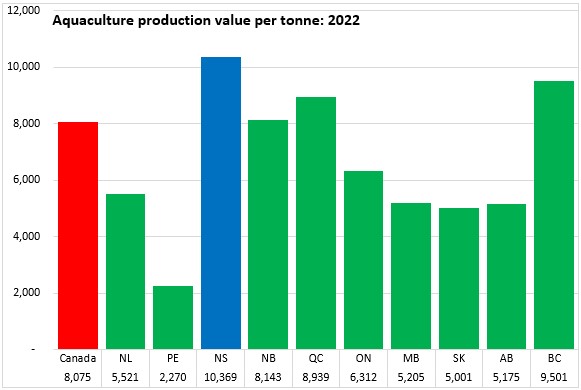
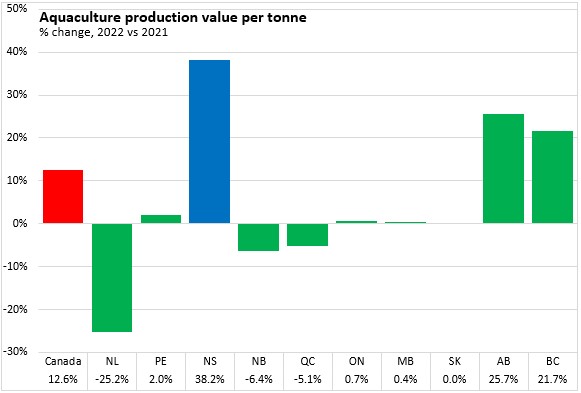
Nova Scotia's aquaculture output volume was down in 2021 and rebounded to new highs in 2022.

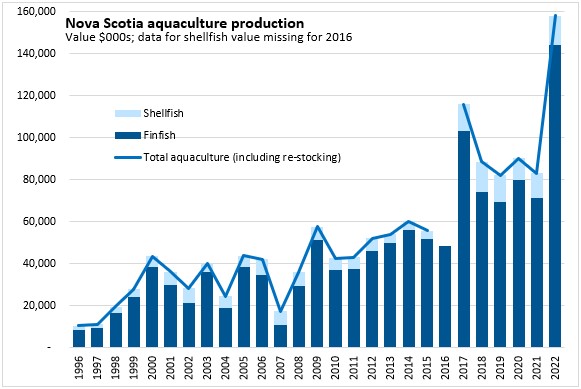
Value Added
Real GDP in Nova Scotia's aquaculture industry grew by 13.6% in 2022, the fastest gain among provinces. Aquaculture real GDP was up in four provinces: Nova Scotia, British Columbia, Prince Edward Island and Saskatchewan. There was little change to aquaculture real GDP in either Québec or Manitoba. Real GDP from aquaculture was down for Newfoundland and Labrador, New Brunswick, Ontario and Alberta.
British Columbia and Nova Scotia generate the largest amount of real GDP from aquaculture.
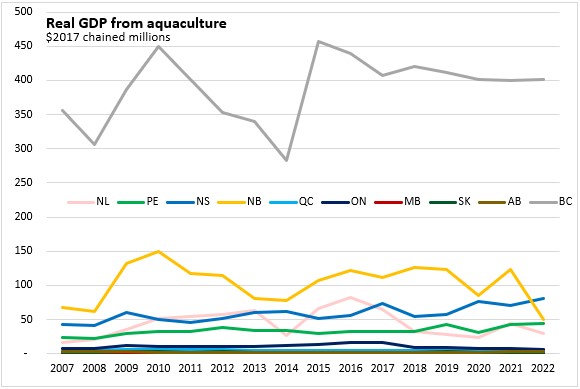
Between 2007 and 2022, Nova Scotia's aquaculture real GDP has grown at an average annual pace of 4.3% per year.
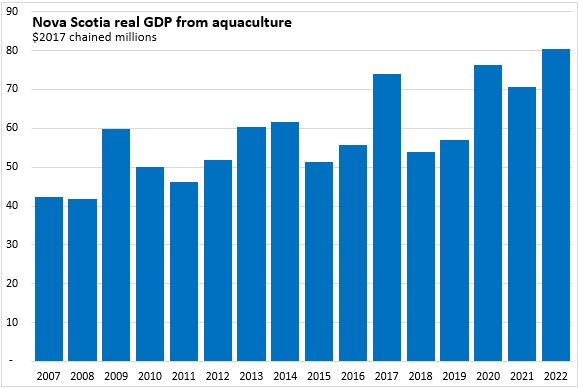
Source: Statistics Canada. Table 32-10-0107-01 Aquaculture, production and value; Table 36-10-0402-01 Gross domestic product (GDP) at basic prices, by industry, provinces and territories (x 1,000,000)
<--- Return to Archive